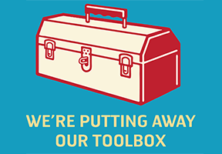Why you need an e-newsletter. Being online (Part 4)

The fourth item in our series about being effective online looks at why an e-newsletter is the next best thing to being there.
What’s an e-newsletter? What’s it good for?
Just about everyone you know uses email and that’s why the e-newsletter is one of the most effective ways to be in touch online. Your e-newsletter goes directly to people’s mailboxes.
Not only that – they invited you to be there. They gave you permission by subscribing.
That’s why the e-newsletter is one of the most powerful online marketing and communication tools available. Email campaigns are a great way to stay top of mind and tell your audience about new initiatives, products or services. You can share relevant sector or industry news, promote an event, distribute a blog post, photo series, promotional video or whatever compelling content you’ve created.
There are three distinct things that make the e-newsletter better than other online communication tools like blogs and social media:
- Your message goes directly to your subscriber. They don’t need to come looking for you online.
- You know your user is getting your message. Posting blogs on your website and sharing content on your social media like LinkedIn, Twitter and Facebook offers no guarantee that users will even see your messages.
- You have the subscriber’s permission. It’s called permission-based marketing. The result is that your database of users is committed, interested and likely to be more receptive to your message than anyone seeing it randomly. While LinkedIn, Twitter and Facebook are also based on a certain kind of permission, none of them are delivered as directly and effectively as an e-newsletter.
At Working Design more than a third of our e-newsletter emails are opened. Even if readers only scan the material, they know what we’re up to.
Benefits of an e-newsletter
E-newsletters will help drive traffic to your website, event or business. That’s where audiences will be exposed to more content and offerings which continue the mission of promoting your campaign, product or service. For example:
- Have a blog item you want more people to see? You can tease it in the e-newsletter and provide a link back to the website.
- Promoting an event? Use the e-newsletter to spread the word and encourage your readers to share it on social media in exchange for reduced admission or VIP seating.
- Want more people to visit your business? Include a special promotion in the e-newsletter that your subscribers can redeem in person.
- Following up with existing clients? Use the e-newsletter to let them know about updates to products or services and how to get the most out of them.
Ready to get started?
With this blog post we simply want to get you thinking about the benefits of an e-newsletter. Our next post will give a rundown of the types of e-newsletters you can use plus tips on how to create successful campaigns.
In the meantime, here are a few points it’s good to be clear about. Discuss these with your team – or your dog if work alone. Then, when it’s time to get down to work, your mailings will be easier to put together and more effective too.
Know your audience. You need to understand who will be reading your emails before you start to develop them. In the marketing world this is called building a “user persona”. You describe who they are, what they do, and what information they want from you. Sometimes an audience can be very singular –such as golfers. Other times it can feature a variety of people such as everyone who likes ice cream.
Determine your content. Since you already know your audience, ask this: ‘Why did these people sign up in the first place?’ Give them that. You might also try outlining the general kind of content you want to share in an e-newsletter. Your list could include any of the following:
- Blog items (written and visual)
- Event promotion/reminders
- News roundup
- Social media updates
- Special offers
- Information on new products or services
- Calls to action
- Client follow-up
You can even include links to websites and articles that are not your own — a great and time-effective way to keep your membership apprised of the latest industry news. (And no, you’re not cheating when you do this. Curating content and acting as a source of information sharing is very useful for the time-stretched reader.)
Think about the above and see what you can come up with. Our next instalment will talk about how to design, create and send out an e-newsletter that people will definitely want to open!
